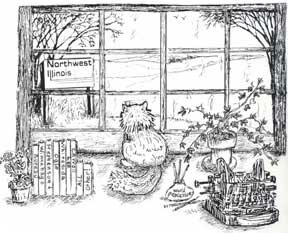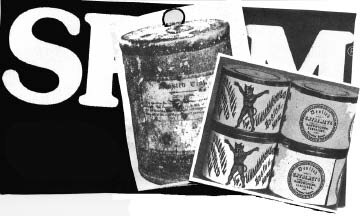
Discover rewarding casino experiences. 
|
In the fifty-five years since its inception till 1992 there were said to have been fifty billion cans sold by the Hormel company. That must mean it’s tasty. Figuring its size, that’s 3.8 cans a second or twelve times around the Earth. It’s welcome all over. It’s sold in fifty countries around the world. Some may believe it was concocted for the G.I.’s in World War II but it was being manufactured in 1937. It was during the war that so many became familiar with it because millions of cans were distributed throughout war zones because it “kept well” and was easily transportable. It could be versatile on the menu if given half a chance but it was wartime so most often it was served “straight” and often. Many became tired of having it so often and it became the topic of many a joke, a fact that the company recognizes and accepts. It wasn’t in wartime that a record of sorts was claimed by a lady who had a can of Spam for thirty years, and when opened it was fresh as when processed. Not only did the government serve SPAM to the military it also transported it to Europe and to Russia where those people became familiar with it and appreciated its many quality during and after the war. In 1989 the U.S. government still was buying the canned meat to feed the military. And still is. Do the army cooks merely slice and dice it for mess? Surely, there’s more. In the early 1990’s SPAM was part of competitions in at least twenty county fairs, Stephenson County being one of them. Entries there in 1991 included quite a variety of recipes such as Quesadillas, Tacos, Bean Soup, Corn Chowder, Triangular Hors d’ ouevers, a Jambalaya, a Dipped SPAM/Swiss sandwich, Casseroles and Ground Spread with pickle relish, etc. It goes to show that SPAM had gone ‘round the world. At the 1992 Stephenson County fair there were even more varieties such as SPAM Primavera, SPAM Pizza, SPAM Carbonara, Tropical SPAM sandwich, Cornbread Casserole and more. Such a competition called for “foodies” to judge it. They were to be Spike O’Dell, then Chicago WGN radio personality, and Olga Gize Carlisle, then food editor and reporter of the Freeport Journal Standard. (We miss her alot.)
The prejudice against meat canned in tins had long since dissipated when SPAM came onto the market in 1937. But in its beginning in the very early part of the nineteenth century, it was real and widespread. Yes, the nineteenth century. As early as 1809 a Frenchman, Nicholas Appert, a commercial food processor, had come up with a canning method in which foodstuff were packed into glass bottles and sealed with cork. They were heated in a new “invention” the autoclave, that used steam, a higher degree of temperature. He had experimented for over fifteen years with a preservation process when the French government offered a prize of 12,000 Francs for a reliable way to process food for the long term, they wanting to support the likes of Napoleans’ army that outran the supply system when invading Russia. Appert won the prize which method had to be published for the public to read. Subsequently, many tried to improve the system. In 1810, Peter Durand, an apprentice of Appert, then in England, had come up with a successful “iron can coated with tin” as per the heretofore most reliable packing method. Durand’s new canister, as they were then called, was an improvement and still called canister, a Greek word meaning reed or cane because such baskets were the standard way of packing tea, coffee, beans and peas. Gradually it was shortened to can which explanation comes later! For awhile they were “tin canisters,” two words. Our dear friends, the Brits, still call them tins. Improvements in tins was an iffy proposition for many years because they were made by hand so the seal wasn’t one hundred percent reliable. And in the cooking process, slow, gave the contents a “tinny” taste. But those that were successful were extraordinarily so. Sir Edward Parry, the Arctic explorer, went to the North in both 1824 and 1826 with tinned foods. The tall can illustrated here is one that made the trip; still sealed tightly a hundred fourteen years later. When opened in the late 1930’s, the carrots therein looked as fresh as the day packed. They smelled only a little bit “metallic” and tasted sweet and only the tiniest bit “tinny.” Ezra Daggett, with son-in-law, Thomas Kensett, applied for a patent for a similar tin can, the first in America in 1819. Their cannery was then in New York state but a few years later opened one on Chesepeake Bay where the seafood was plentiful as well as having acres of orchards to supply fruit for canning. They “prospered exceedingly,” wrote author Laurence Johnson in his book, On the Shelf, from which the pictures here are taken. Daggett and Kensett’s cannery being near Baltimore during the Civil War did very well in promoting canned foods for the war fronts and encampments of the Union Army. The soldiers became very aware of the possibilities of the canning process. Improvements evolved. At about the time of Daggett’s patent, William Underwood arrived in New Orleans from England to scout for a cannery site but seeing little thee, he walked all the way to Boston where in 1821 he founded a cannery, discovering at the same time that Americans weren’t yet interested in tinned foods. They were very suspicious of its safety and it was too expensive especially that done in the U.S. Underwood solved that problem by stamping the word “London” on all labels. If it was imported, it must be alright, eh! It was Underwood, by the way, who “invented” the word can by shortening canister on his invoices for speed sake, in the American way! Can. Can. Credit it to Will. Underwood was not only early in the canning industry but inventive, too. He constantly experimenting with recipes for meats and vegetables to tin, he worked with all sorts of spices and flavorings. In those days goods were often traded. Sugar or hemp, for instance, could be used or traded again for someone’s needs. Spices from the Orient were an important trade to be used in the several recipes he developed for sauces and catsups. Soy, from India, too, was ingredient in many of his canned foods in huge amounts. In the lexicon of culinary arts, spicing a food is called “deviling.” Underwood’s most well-known food was a tinned meat but quite unlike SPAM. Heard of “deviled ham?” In that little can with the “Little Red Devil” on the label? That was one of his first successful meats though not the pure pork shoulder of the more recent SPAM. Growing up, I thought it the most delicious, exotic thing ever. I don’t recall having SPAM but the recipe here was one my mother used, maybe in the ‘40s and ‘50s. Yes, that long ago. This is but a short background of some tinned foods that we Northwesterners have put to good use. We needn’t look down our noses on the product because it serves us well just as it served that very funny play towards success, “Spamelot.” See it? Its humor was of the right bent to carry through on the character of the product. It was first filmed in 1970 as part of the television show “Monty Python.” Time does fly. The Hormel Company that manufacturers SPAM uses humor, too, in its SPAM Museum. Yes, there is a Museum of SPAM history where its “inventor,” George Hormel’s store is replicated (1892-1922), the delivery wagon, or one like it, can be seen with every facet of SPAM’s long story is displayed. Some of the exhibits are in small units shaped like the tin can it came in, one complete with a sixteen foot key. Many photos capture the history of the product including Hormel Girls that was a drum and bugle corps that marched in parades at first and then appeared on television. SPAM doesn’t take itself too seriously just as its users haven’t over the years but wouldn’t you say it is a milestone product that shaped the mercantile world to a big degree! At first the cans went unmarked with a name until a logical answer arose. What was in the can? Spiced Ham, or SPiced hAM.
|





